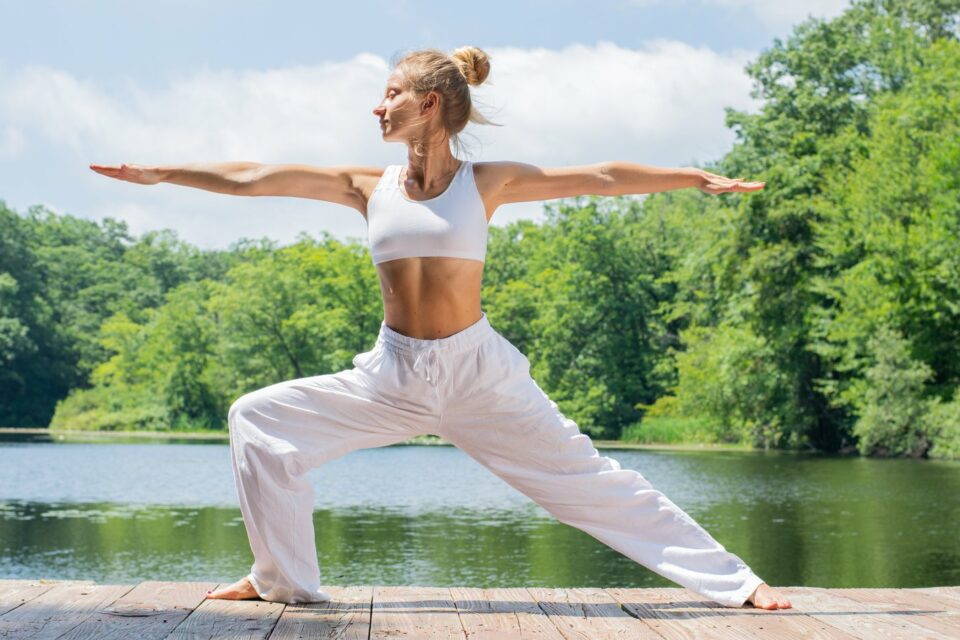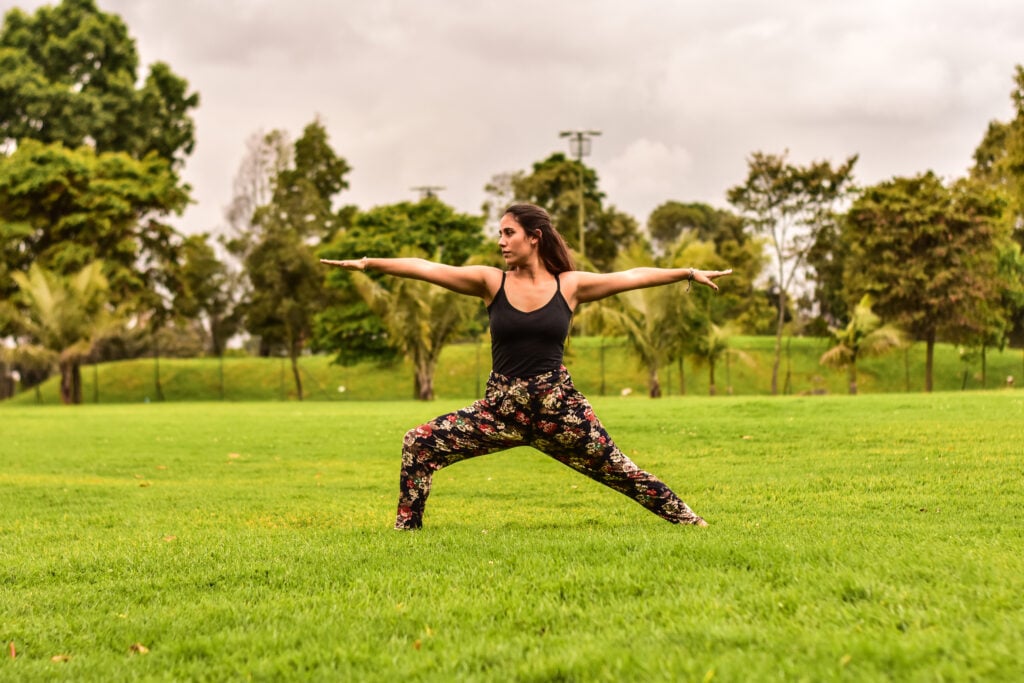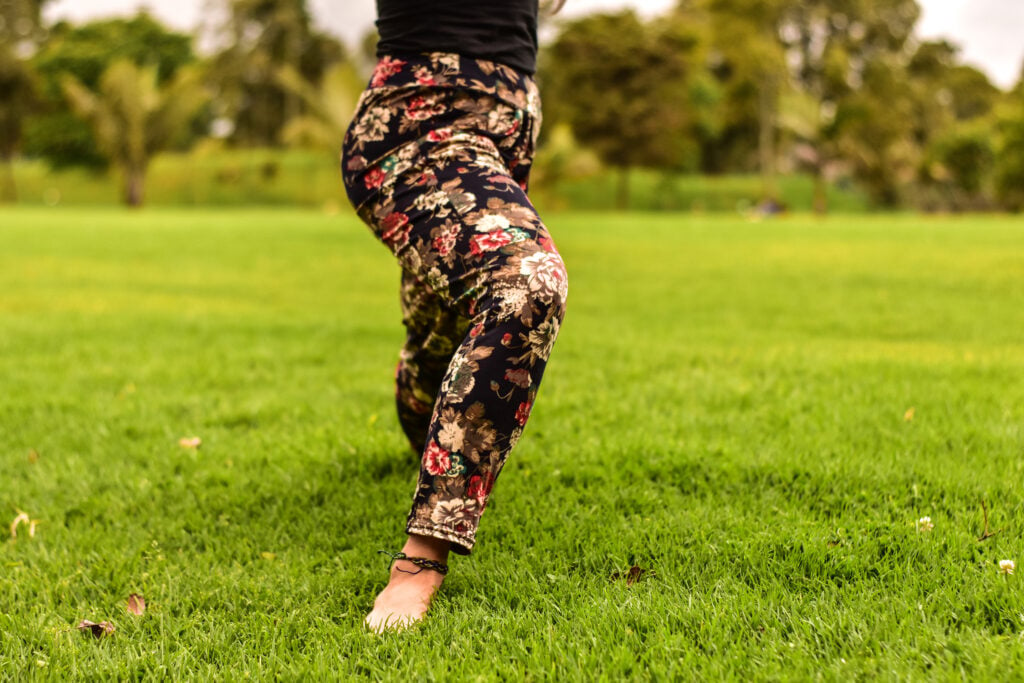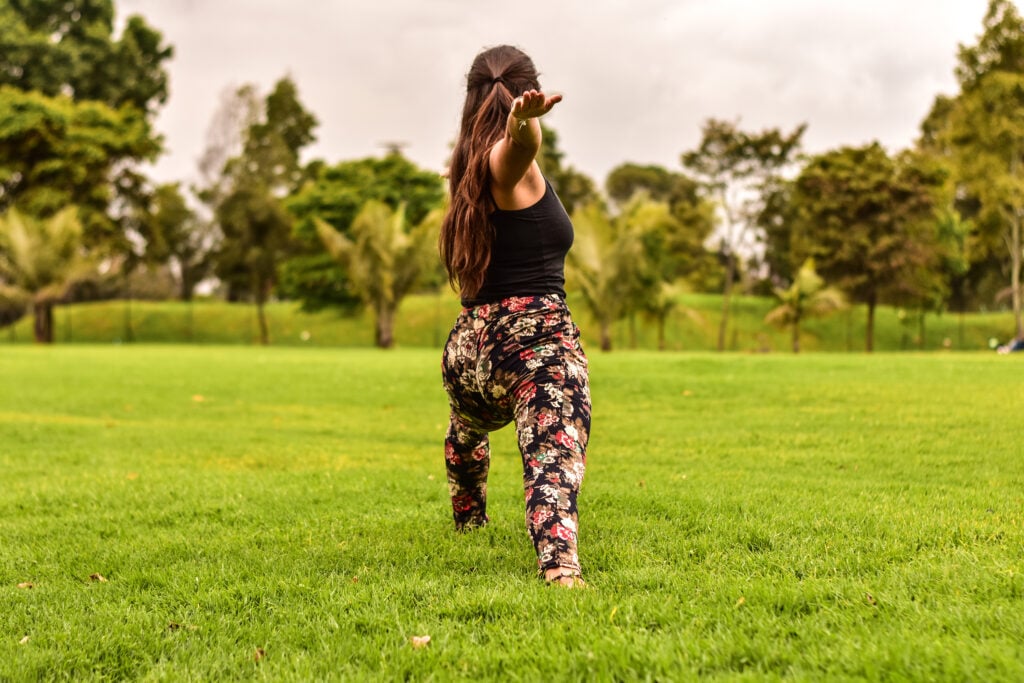Virabhadrasana II Tutorial: step-by-step to the Warrior II

Here’s your Virabhadrasana II tutorial. Do you want to master this amazing pose? We’ll give you some details you need to pay attention to in order to improve Warrior II pose.
Virabhadrasana II presents physical, mental and emotional benefits that are so important, this pose is present in almost every single yoga practice. The most evident is that it strengthens our base of support, our legs, glutes, and the core muscles. In order to do it properly, and actually work on your muscles, while avoiding injuries, there are important aspects we’re going to cover.
Bellow, you can find the Virabhadrasana II tutorial for building the pose, followed by the most common mistakes and how to correct your alignment.
Virabhadrasana II Tutorial: step-by-step
Remember you can manage the intensity of the practice, by going deep in the pose. It’s important to know your limits and not let your ego rule the practice, but you, better than anyone else, know your body.
Step 1: Tadasana

@nicolashergosum
There are other possibilities, but the most common is to start in Tadasana. Stand with your feet together or hip-width apart. Keep your shoulders relaxed and the natural curve of your lower back.
Step 2: Step back

@nicolashergosum
Inhale. With your left foot, step back and put your feet on a 90-degree angle (the right one points forward, while the left points to the left). The step must be wide, and you must feel free to correct the distance at any time.
If possible, in the same movement, raise your arms to the shoulders level.
Exhale. Bend your right knee while your lower your hips. Look into your right hand.
Stay in the pose for 10 breathings.
Step 3: Stretch your front leg

@nicolashergosum
Inhale. Stretch the right leg and swing your upper body forward.
Bring awareness to your core.
Step 4: Back to the beginning

@nicolashergosum
Exhale. Contracting your core, step forward and enter Samastitihi.
Virabhadrasana II Tutorial: details
Alignment is extremely important when doing yoga. Although we rarely get injured by doing one asana with mistakes, the repetition of the wrong movements can actually become a problem. That’s why we decided to create a Virabhadrasana II tutorial that also focuses on the most common mistakes teachers have reported.
Knees and ankle aligned

@nicolashergosum
This is one of the most important since it’s what allows the protection of your knees. Yoga is amazing, but sadly, there are endless injured knees among those who practice it. That’s why alignment is so important.
The knee must be on the same line of the ankle, and never (let us repeat), never, push it forward than the ankle. Keep pushing your front leg outside.
Another common movement, is the front knee falling inside. To avoid it, you must keep pushing your leg outside.
The goal of Virabhadrasana II is also to open the hips, therefore, this is the right action to stress it. The back leg must also follow that tendency. You can look to your hips and imagine it opening.
Shoulders

@nicolashergosum
Keep your shoulders relaxed! Does it seem too obvious to even be on this Virabhadrasana II tutorial? Well, start noticing. Often we accumulate unnecessary tension.
You can try this tip: turn your palms up, bring your shoulder blades closer, release and turn your palms down again. Always keeping your arms raised.
Lower back

@nicolashergosum
Another detail that is harder to detect and to modify, is the lower back curve or the tailbone position. This is especially important for those with lordosis. If you suffer from it, pay close attention the next time you perform Virabhadrasana II.
What happens, and usually as a result of trying to go deep on the pose, is that we point our tailbone backward, stressing the curve on the lower back. It can be really bad for those who already suffer from lower back pain.
The idea is to point your tailbone to the floor and keep the lower back curvature as natural as possible. If you can’t do it while deepening the pose, it’s because you’re not ready for it then. Practice it from a safe place, and build your pose slowly.
We hope this Virabhadrasana II tutorial can help you improve your practice, and most of all, be in close contact with your body and mind.
You may also like:
- The roots of Ashtanga Yoga
- How to choose a yoga teacher
- Meditation for expansion: put yourself in perspective

